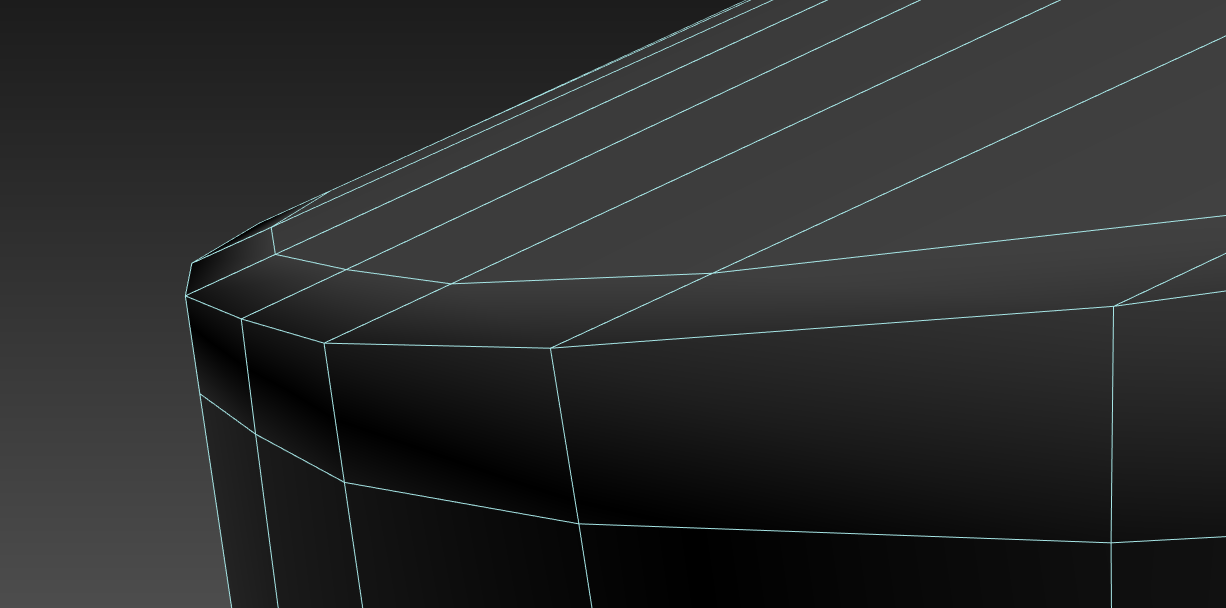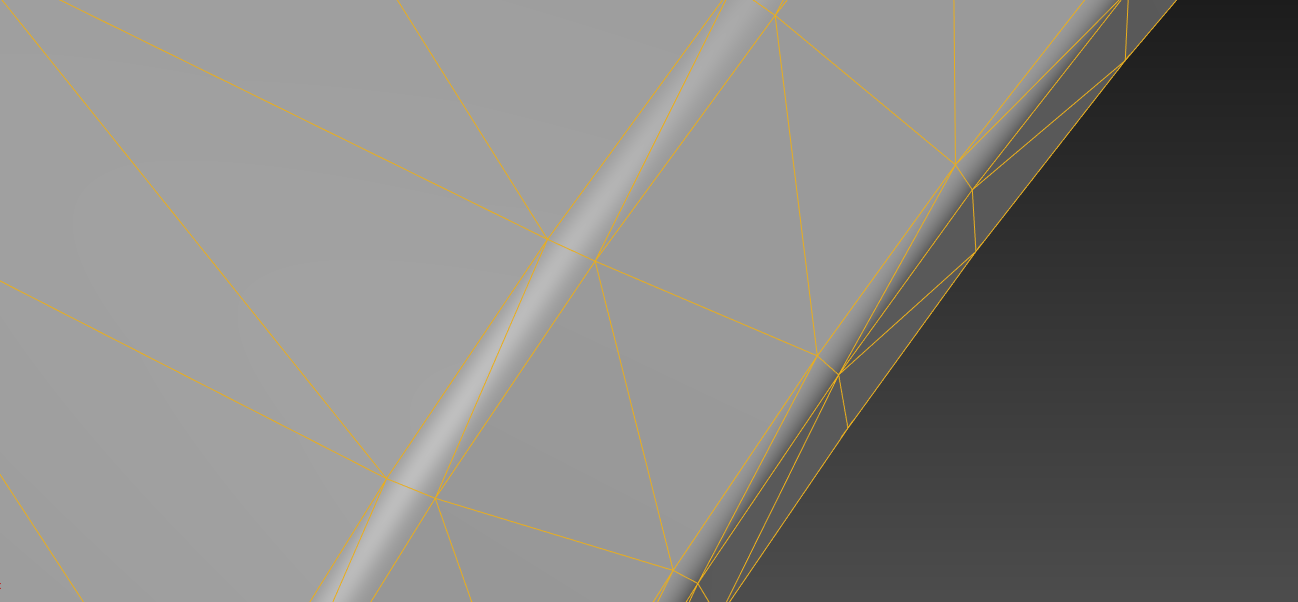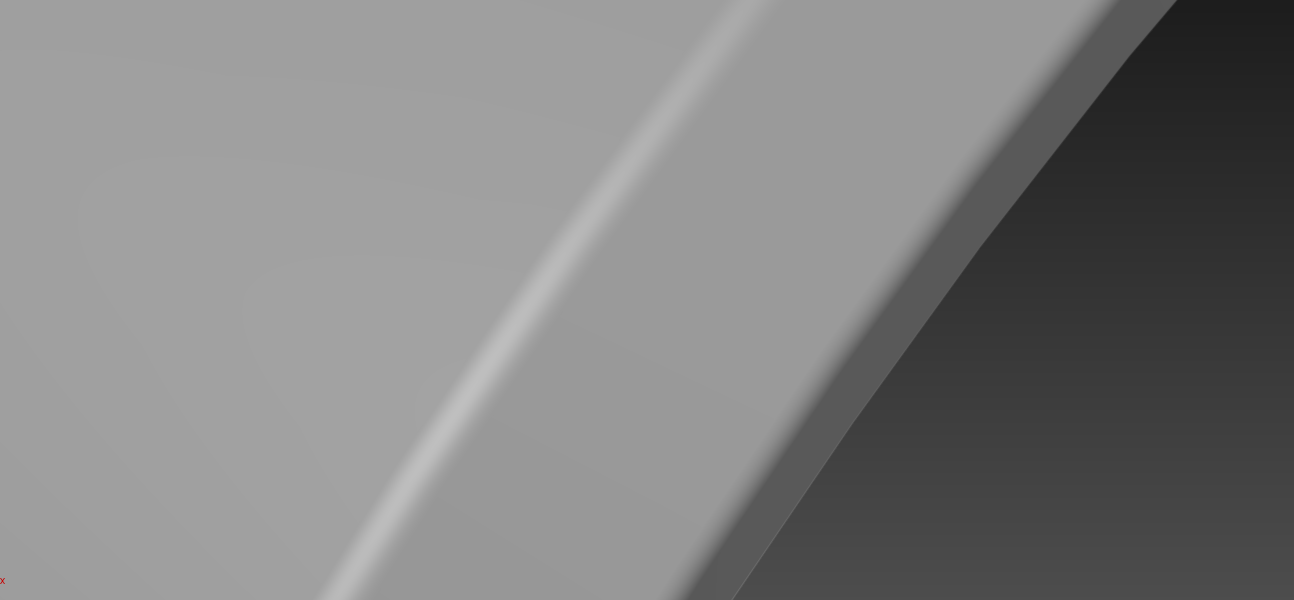The BRAWL² Tournament Challenge has been announced!
It starts May 12, and ends Oct 17. Let's see what you got!
https://polycount.com/discussion/237047/the-brawl²-tournament
It starts May 12, and ends Oct 17. Let's see what you got!
https://polycount.com/discussion/237047/the-brawl²-tournament
Edge smothness
Hello everyone,
Recently I came across something that I had never seen and it's driving me insane to figure it out.
I am used to do, and to see all around people using 2 support edges around a corner to get a smooth result.
Example:

That's very common.
Problem is, I was checking a model from a game ( no other reason than studying it ), and I found something very weird.
The edges were chamfered ( 2 edges instead of 3 ), but still, the smoothness remained as if there were 3.
Example:


The model has no smoothing groups applyed to it, and as a result, if I detach any of it, it gets faceted all over.
How was this accomplished?
Thank you!
Recently I came across something that I had never seen and it's driving me insane to figure it out.
I am used to do, and to see all around people using 2 support edges around a corner to get a smooth result.
Example:

That's very common.
Problem is, I was checking a model from a game ( no other reason than studying it ), and I found something very weird.
The edges were chamfered ( 2 edges instead of 3 ), but still, the smoothness remained as if there were 3.
Example:


The model has no smoothing groups applyed to it, and as a result, if I detach any of it, it gets faceted all over.
How was this accomplished?
Thank you!
Replies
http://wiki.polycount.com/wiki/Face_weighted_normals
If you can afford that, you can afford an actual bevel because it has the same amount of geometry. You'll also avoid the crappy shadow artefacts that come with it.
poopipe, huffer, that's interesting, are there more up/downsides to each technique?
This seems like a great way to improve hardsurface skills.
Also, is there some way to mix Wieghted Normals and smoothing groups usage inside Max?
You can use Smoothing Groups first, then Edit Normals after, to bend those normals. But you can't do the reverse.
poopipe, huffer, that's interesting, are there more up/downsides to each technique? This seemed very good to improve my work.
Thanks guys, I alredy learned a lot from you
poopipe, huffer, that's interesting, are there more up/downsides to each technique? This seemed very good to improve my work.
Thanks guys, I alredy learned a lot from you
For LODs - plan properly and it wont be a problem
You can still mess with normals if there's a bevel.
The technique has its place (massive things with weird resource budgets etc.) but that place is not 'everywhere because its quick' and that's what i see an alarming amount of.
My main gripe is that it's incredibly inefficient.
Eg.
A cube with support edges has 108 triangles - for the same silhouette as one with 12. Call me old fashioned but you're going to need a pretty compelling argument to pass that off as a sensible use of resources.
In my experience, if an object is small enough on screen for this technique to not look crap its also small enough for a single hard edged bake or a single segment hard edged bevel to not look crap.
If it's not that small, you need the geometry or it'll look crap.